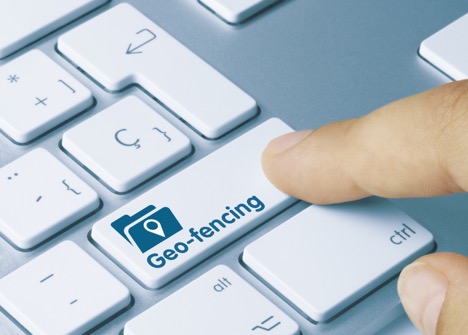Geofencing is essential to mobile marketers. Find out everything you need to know about this location-based software here.

86% of marketing experts say that a cohesive customer journey is critical to sales success. Geofencing is just one of the tools that can help you craft a killer customer journey. But what exactly is geofencing and what can you do with it?
Here’s everything you need to know about constructing a geofence.
What Is Geofencing?
Geofencing is the practice of using radio frequency identification (RFID), Wi-fi, global positioning (GPS), or cellular data to set out a geographic boundary. Once established, a marketer can set up triggers within this virtual “fence” that fire when a mobile device enters or exits the area. Triggers can include:
- Sending a text
- Sending an email
- Firing an app notification
Geofencing is essentially a way for marketers to target users within a designated geographic area.
What Are the Practical Applications?
Geofencing targets consumers based on hyper-local location. This opens up a slew of opportunities to trigger immediate sales. It can also help you better understand that shopper mindset.
For instance, a brick-and-mortar store could set up a geo-fence around its physical location. When shoppers pass into the area, they could receive a location-triggered deal or alert. This sales push would make them more likely to stop in and shop.
Setting up a geo-fence around a competitors location could also benefit a business. Imagine a potential customer leaves a rival store only to receive an offer for zero percent financing on a comparable product. This would make them more likely to comparison shop.
Even if a geo-fenced notification doesn’t prompt immediate action, it still gives the business valuable insight into customer behavior. You’re able to track where a customer was and at what time they received the message. This information can help refine targeting efforts in the future.
How Is It Used in Different Industries?
Geofencing is incredibly versatile, limited only by your own ingenuity. Here are a few examples of how it’s being used across different industries.
Retail: Sending promotional messages to local shoppers to drive visits.
Automotive: Retargeting users that have visited your or your competitors’ dealership.
Airline Businesses: Upselling customers with fast-track services when they enter the airport.
Hospitality: Prompting feedback when a user steps outside of your store.
Coffee chains: Offering discounts to returning customers to build brand loyalty.
What Technologies Are Used?
Geofencing uses different location services to detect a users device within a predefined “fence”. What service it uses will vary depending on the provider. A geofence may use:
- Cellular data
- WiFi
- GPS
- RFID
Cellular and WiFi are typically recommended for their reliability. GPS solutions are used less frequently because the technology drains the users’ battery much faster than other options. When researching details of geofencing providers you should take note of the technology they’re using.
Whatever technology you choose to use when constructing a geofence, you should note that your users will have to opt-in to allow your positioning to work. Users can also opt-out of positioning services at any time.
Construct a Geofence Today
Geofencing is one of the best ways to market to users in a hyper-local manner. Now you know what a geofence is, some of the practical applications, and what technologies are at work in constructing them.
Running a business in Colombia? Here’s what businesses in Colombia should watch out for in 2019.




